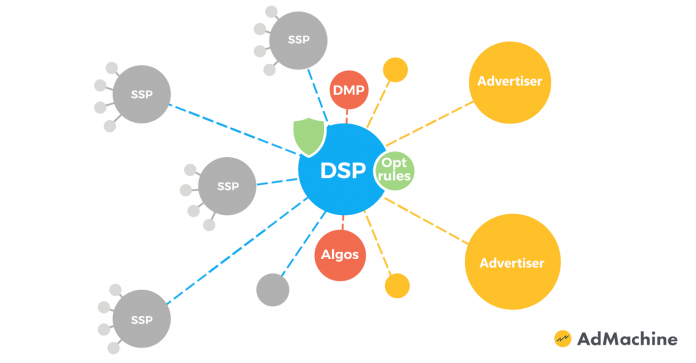
When the advertising was on its initial state of development, publishers used to come to advertisers and offer the inventory on their websites. It was interesting but a bit inconvenient activity, as there were a lot of time spent on negotiations, changes were not accepted immediately (those who work in digital advertising know how important it is to be fast as a wind) and there were a lot of cheaters and dishonest people involved.
First step to automate and optimize the process was advertising networks borning. The process became quicker, but it still was not perfect. As advertisers are ready to spend their money, but they would like to give each cent for really interested client. Unfortunately, ad networks could partially meet this requirement and we finally see a new star production – DSP platform.
What is different now and why advertisers prefer DSP?
Now advertisers are given chance to buy ad displays in real time and Demand Side Platform is their first aid in it.
“Real time” is a key idea of the whole process as the procedure of buying happens when the users are just surfing websites engaged to the system.
Great importance of the approach is that people selling ads now select where and for who they may sell their ad and at what price.
For example, you sell high heeled shoes and a user enters website about fashion in the 17th century. Your target audience is ladies, for example, in their thirties and they live in the same city with your shop. The visitor fits your conditions and you state how much money you are ready to put on the table to show your ad for her. The same your competitors do and winner with the highest price is lucky to show the ad.
Of course, the game isn’t possible to handle manually. Time for loading a page is less than a second. Computers have entered our lives in many spheres and digital marketing shouldn’t become an exception. Machine can’t feel ill, make an error or just stop thinking about your task. Simple script lets you to work at any time of the day without asking for a day-off.
Main impact here is not about the website where the ad is published, but for people who are surfing it. Users are also in winning position as personalized ads make them more loyal and less annoyed. And advertisers can make better calculations how much they have for advertising and simply not buy the display if it is too expensive.
What will happen to traditional networks?
Who knows, to tell the truth. But as competition is getting hotter, they have to adapt and change their style. Now we can say that they have taken something from DSP platforms. However, the latter ones also adopted some style from their “parents”. Good news is that both advertisers and publishers can use both variants to find the best solution or to gain more money.
















